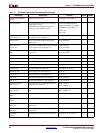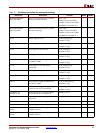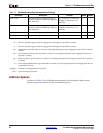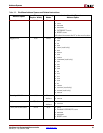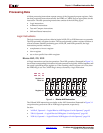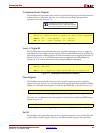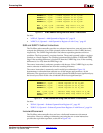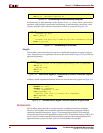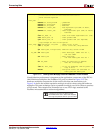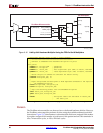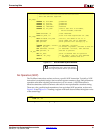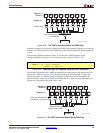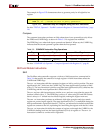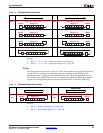
28 www.xilinx.com PicoBlaze 8-bit Embedded Microcontroller
UG129 (v1.1.2) June 24, 2008
Chapter 3: PicoBlaze Instruction Set
R
If incrementing or decrementing a multi-register value—i.e., a 16-bit value—perform the
operation using multiple instructions. Incrementing or decrementing a multi-byte value
requires using the add or subtract instructions with carry, as shown in Figure 3-11.
Negate
The PicoBlaze microcontroller does not have a dedicated instruction to negate a register
value, taking the two’s complement. However, the instructions in Figure 3-12 provide the
equivalent operation.
Another possible implementation that does not overwrite the value appears in Figure 3-13.
Multiplication
The PicoBlaze microcontroller core does not have a dedicated hardware multiplier.
However, the PicoBlaze microcontroller performs multiplication using the available
arithmetic and shift instructions. Figure 3-14 demonstrates an 8-bit by 8-bit multiply
routine that produces a 16-bit multiplier product in 50 to 57 instruction cycles, or 100 to 114
clock cycles. By contrast, the 8051 microcontroller performs the same multiplication in
eight instruction cycles or 96 clock cycles on a the standard 12-cycle 8051.
Figure 3-10: Incrementing and Decrementing a Register
Figure 3-11: Incrementing a 16-bit Value
ADD sX,01 ; increment register sX
SUB sX,01 ; decrement register sX
inc_16:
; increment low byte
ADD lo_byte,01
; increment high byte only if CARRY bit set when incrementing low byte
ADDCY hi_byte,00
Figure 3-12: Destructive Negate (2’s Complement) Function Overwrites Original
Value
Figure 3-13: Non-destructive Negate Function Preserves Original Value
Negate:
; invert all bits in the register performing a one’s complement
XOR sX,FF
; add one to sX
ADD sX,01
RETURN
Negate:
NAMEREG sY, value
NAMEREG sX, complement
; Clear ‘complement’ to zero
LOAD complement, 00
; subtract value from 0 to create two’s complement
SUB complement, value
RETURN



